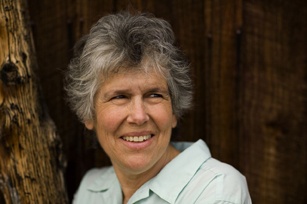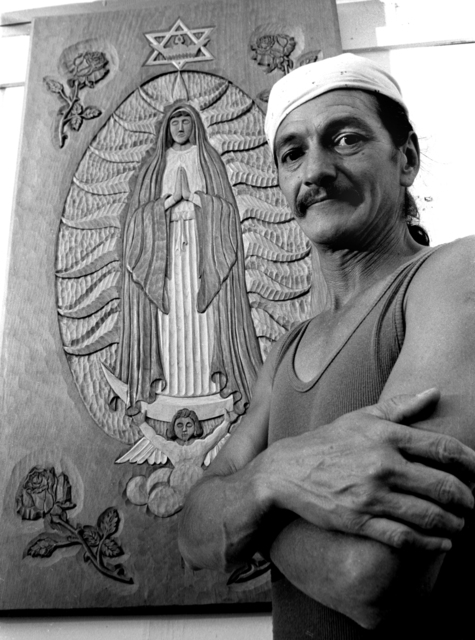The Art is OK Gallery, tucked between Cost Plus and Guitar Boy, might seem an odd venue for Cary Herz’ photographs of New Mexico crypto-Jews. But the crowd there for the opening of her show, which runs through Feb. 11, didn’t seem to think so. An eclectic mix hailing from Albuquerque’s Jewish, Hispanic, literary and art communities, the group stood quietly as Herz explained how her photos and their companion book, New Mexico’s Crypto-Jews: Image and Memory, just published by UNM Press, came to be.The term crypto-Jew refers to Sephardic Jews who came to Nuevo España with the early explorers during the Inquisition, when Jews who didn’t convert to Catholicism were either banished or executed. Unlike the more prevalent Ashkenazi Jews who eventually came to the state from Europe, these conversos practiced Catholicism in public but retained their Jewish identities and rituals in private.When the Inquisition followed them to the New World, the crypto-Jews moved north, some as far as what is now southern Colorado, but many settled in northern New Mexico. Some changed their names to reflect the landscape around them, and the names Peña, Pino, Flores and Rios, to name but a few, may well indicate a converso background. Many conversos embraced Catholicism so thoroughly their Judaism ultimately was lost. But a surprising number maintained the secret and the Jewish practices that have been handed down from generation to generation for the past 400 years.Herz, a native New Yorker and the child of Holocaust survivors, was photographing the Jewish cemetery in Las Vegas, N.M., in 1985, when she first heard about these “other people.” She noted to the audience at the Art is OK Gallery that she doesn’t like the term “crypto-Jew,” but in the absence of a better one it serves as an apt descriptor (and Google search term). Her book provides what she calls a “photographic diary” not only of these people but of the customs they’ve carried through the centuries. Divided into three sections—Descendants, Headstones, and Portugal and Spain (where crypto-Jews have begun to explore their roots as well)—the book also serves as both an introduction to the topic and a record of its subjects.In perhaps a unconscious paraphrasing of Chekhov, Herz asserted "Art should not give the answers, it only poses the questions.” Her book focuses on the descendants themselves, the photographs and captions exploring family traditions that include Friday night candle-lighting, kosher butchering and circumcision; iconography from church altars with six-pointed stars to dreidel-like toys; and rituals involving wine, the covering of mirrors for seven days after a death, Ladino speech and the donning of prayer shawls. In addition, Herz has photographed northern New Mexico graves bearing Stars of David and Hebrew lettering, as well as Biblical names like Esther and Jacob, even the name of God, Adonai.Aside from the author’s preface and an academic introduction by scholar Ori Z. Soltes, Herz chooses to let the people themselves tell their stories. It’s a good choice: Their words accompany Herz’ marvelous photos, which show them practicing the Judaism they’ve been taught or learned as they’ve rediscovered it.There’s Dennis Duran, for example, who felt compelled to convert to Judaism long before he learned of his 16 th -century Sephardic roots; and the Rev. William E. Sanchez, who finds no anomaly in being both a Catholic priest and a Jew. “Being both Sephardic and Catholic began as a means of survival centuries ago,” he notes. “Today they have both survived and coexist.” Other testimonies are equally singular and moving.An afterward by Mona Hernandez traces the journey of La Conquistadora , a statue brought to Santa Fe in 1625 and entrusted to her ancestor Francisco Gomez, who eventually became acting governor of the territory. In 1662, one of Gomez’ sons was arrested for “Judaizing,” though he was ultimately acquitted. During the Pueblo Revolt of 1680, Gomez’ niece rescued the statue from the burning church, a scene now depicted on one of St. Francis Cathedral’s doors. It’s believed the appointment of La Conquistadora as the colony’s patron saint may have allowed her crypto-Jewish followers to incorporate some of their Jewish customs into their Catholic worship.
Photographs from New Mexico’s Crypto-Jews: Image and Memory by Cary Herz will be on display at Art is OK Gallery (3301 Menaul NE, Suite 28) through Feb. 11. For more info, visit caryherz.com.












